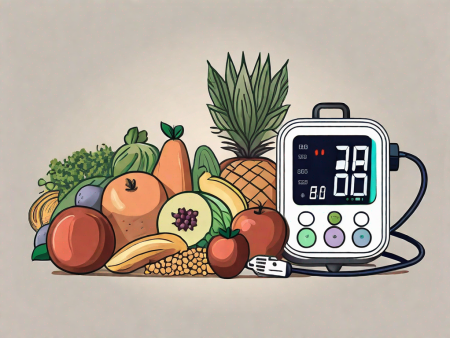Discover the most prevalent chronic diseases affecting older men, including heart disease, diabetes, and prostate cancer.
Common Chronic Diseases in Older Men
Men face numerous health challenges as they age, and chronic diseases are among the most prevalent. Understanding these conditions is crucial for both prevention and management. So, let’s dive into the world of common chronic diseases in older men and discover how they can impact their daily lives.

Understanding Chronic Diseases
Chronic diseases are long-term health conditions that persist over time. Unlike acute illnesses that come and go, these sneaky foes stick around like unwelcome houseguests. They often require ongoing medical care and can significantly affect a person’s quality of life.
Living with a chronic disease is like embarking on a never-ending journey, where each day brings its own set of challenges. It’s a constant battle, a test of resilience and determination. But amidst the struggle, there is hope and the opportunity to find strength in the face of adversity.
When we think of chronic diseases, a multitude of conditions come to mind. From heart disease and diabetes to chronic respiratory diseases, cancer, and arthritis, the list seems endless. Each condition carries its own set of symptoms, treatments, and management strategies.
Definition and Impact of Chronic Diseases
Chronic diseases encompass a wide range of conditions, including heart disease, diabetes, chronic respiratory diseases, cancer, and arthritis. They can cause physical discomfort, restrict mobility, and lead to other complications. These diseases are also associated with increased healthcare costs, impacting individuals, families, and society as a whole.
Heart disease, for example, is a leading cause of death worldwide. It affects millions of people, causing chest pain, shortness of breath, and fatigue. Diabetes, on the other hand, disrupts the body’s ability to regulate blood sugar levels, leading to a host of complications such as nerve damage, kidney disease, and vision problems.
Chronic respiratory diseases, including asthma and chronic obstructive pulmonary disease (COPD), make it difficult for individuals to breathe freely. The simple act of taking a deep breath becomes a daily struggle, limiting their ability to engage in physical activities and enjoy life to the fullest.
Cancer, a word that strikes fear into the hearts of many, encompasses a vast array of diseases. From lung cancer to breast cancer, prostate cancer to leukemia, each type presents its own unique challenges. The battle against cancer is a relentless one, requiring a multidisciplinary approach and unwavering determination.
Arthritis, a condition that affects the joints, can cause pain, stiffness, and swelling. It can make even the simplest tasks, such as opening a jar or tying shoelaces, feel like insurmountable obstacles. Yet, with the right treatment and management, individuals with arthritis can find ways to alleviate their symptoms and improve their quality of life.
The Connection Between Aging and Chronic Diseases
As men age, their risk of developing chronic diseases tends to increase. While genetics certainly play a role, other factors like lifestyle and environment also contribute to the likelihood of developing these conditions. Aging is like a marathon, and chronic diseases can be the finish line tape. But, fear not! By understanding the most prevalent chronic diseases in older men, we can be one step closer to a healthier life.
One of the most common chronic diseases in older men is cardiovascular disease. As the years go by, the arteries can become clogged with fatty deposits, leading to heart attacks and strokes. However, adopting a heart-healthy lifestyle, including regular exercise, a balanced diet, and stress management, can significantly reduce the risk of developing cardiovascular disease.
Another chronic disease that often affects older men is prostate cancer. This type of cancer typically develops slowly, and early detection is crucial for successful treatment. Regular screenings and discussions with healthcare professionals can help identify any potential issues and guide individuals towards appropriate interventions.
Chronic obstructive pulmonary disease (COPD) is also prevalent among older men, especially those who have a history of smoking. This progressive lung disease can cause breathing difficulties and reduce lung function over time. Quitting smoking and avoiding exposure to harmful pollutants can help slow down the progression of COPD and improve lung health.
Age-related macular degeneration (AMD) is another chronic disease that affects older men. This condition causes a gradual loss of vision, making it difficult to read, drive, or recognize faces. Regular eye exams and a healthy lifestyle, including a diet rich in antioxidants and nutrients, can help protect against AMD and preserve vision.
Understanding the connection between aging and chronic diseases empowers individuals to take control of their health. By making informed choices, seeking regular medical check-ups, and adopting healthy habits, we can defy the odds and live a fulfilling life, even in the face of chronic diseases.
Most Prevalent Chronic Diseases in Older Men
As our aging heroes continue their journey through life, they may encounter a notorious gang of chronic diseases. These conditions can pose challenges and require careful management to maintain optimal health and well-being. Let’s take a closer look at some of the common culprits that often target older men:
Cardiovascular Diseases
The heart, that magnificent muscle pumping life through our veins, can sometimes be prone to mischief. Cardiovascular diseases, such as coronary artery disease and heart failure, are among the leading causes of death in older men. These conditions can restrict blood flow to the heart and other vital organs, leading to serious health complications. However, fear not, for there are ways to combat these challenges. Taking care of your ticker through regular exercise, a heart-healthy diet, and managing risk factors like high blood pressure and cholesterol levels can help keep these conditions at bay.
Diabetes
Diabetes, a villainous metabolic disorder, can throw a wrench in the body’s ability to regulate blood sugar. This condition requires careful management, as high blood sugar levels can wreak havoc on multiple organs, including the heart, kidneys, eyes, and nerves. Older men are at an increased risk of developing type 2 diabetes, but with proper lifestyle modifications, this condition can be controlled. By adopting a balanced diet, engaging in regular physical activity, and monitoring blood sugar levels, you can show those sweet cravings who’s boss and keep diabetes in check.
Chronic Respiratory Diseases
Breathing can be taken for granted until a chronic respiratory disease, like chronic obstructive pulmonary disease (COPD), steps in to make life a little harder. COPD is a progressive lung disease that causes breathing difficulties due to airflow obstruction. It can be caused by long-term exposure to harmful substances like cigarette smoke or environmental pollutants. To maintain lung health and avoid exacerbations of respiratory symptoms, it’s crucial for older men to quit smoking, minimize exposure to secondhand smoke, and stay away from polluted environments. Additionally, regular exercise and pulmonary rehabilitation programs can help improve lung function and overall respiratory well-being.
Cancer
Cancer, the merciless enemy that affects people of all ages and genders, becomes increasingly prevalent in older men. Various types of cancer, including prostate, lung, colorectal, and bladder cancer, pose significant risks. Regular check-ups, cancer screenings, and early detection play a vital role in successful treatment outcomes. Adopting a healthy lifestyle, which includes a balanced diet, regular exercise, and avoiding tobacco and excessive alcohol consumption, can help reduce the risk of developing certain cancers. Remember, warriors, early detection often leads to triumph, so stay vigilant and prioritize your health!
Arthritis
Oh, those creaky joints! Arthritis, a condition affecting the bones and joints, can turn even the simplest tasks into a chore. Osteoarthritis, the most common form of arthritis, often affects older men. It occurs when the protective cartilage that cushions the ends of bones wears down over time, leading to pain, stiffness, and reduced mobility. However, there are ways to combat this villain and maintain joint health. Maintaining a healthy weight, engaging in regular exercise, and practicing joint-friendly activities like swimming or cycling can help alleviate symptoms and improve overall joint function. Additionally, physical therapy and medications prescribed by healthcare professionals can provide further relief.
In conclusion, as older men navigate the journey of aging, they may encounter various chronic diseases. However, armed with knowledge, preventive measures, and proper management strategies, they can face these challenges head-on. By prioritizing their health, adopting healthy lifestyle habits, and seeking regular medical care, our aging heroes can continue to lead fulfilling lives and inspire others to do the same.
Risk Factors for Chronic Diseases in Older Men
To face your nemesis head-on, understanding the risk factors is crucial:
As men age, they become more susceptible to chronic diseases that can significantly impact their quality of life. These diseases, such as heart disease, diabetes, and certain types of cancer, can be formidable adversaries. However, by recognizing and addressing the risk factors associated with these conditions, men can take proactive steps to protect their health and well-being.
Lifestyle Factors
Your everyday choices can either be your secret weapon or your Achilles’ heel. A sedentary lifestyle, characterized by long hours of sitting and minimal physical activity, can be detrimental to your health. Engaging in regular exercise, such as brisk walking, jogging, or cycling, can be a superhero action that keeps the villains at bay!
In addition to exercise, maintaining a balanced diet is essential for optimal health. Consuming a variety of fruits, vegetables, whole grains, lean proteins, and healthy fats can provide the necessary nutrients to support your body’s functions. On the other hand, indulging in unhealthy eating habits, such as excessive consumption of processed foods, sugary snacks, and high-fat meals, can contribute to the development of chronic diseases.
Breaking those bad habits, such as overindulging in alcohol or tobacco use, is another crucial step in reducing your risk of chronic diseases. Excessive alcohol consumption can lead to liver damage, high blood pressure, and an increased risk of certain cancers. Similarly, tobacco use is a major risk factor for heart disease, stroke, and various types of cancer. By making a conscious effort to limit alcohol intake and quit smoking, you can become a true health superhero!
Genetic Factors
While we can’t change our genes, knowledge is power! Understanding your family history can help you identify potential threats and take preventive measures. Certain chronic diseases, such as heart disease and diabetes, have a genetic component. If your parents or close relatives have been diagnosed with these conditions, it’s important to share this information with your healthcare provider.
Your healthcare provider will serve as your wise mentor in this quest for health. Armed with knowledge about your family history, they can assess your individual risk and recommend appropriate screenings, lifestyle modifications, and preventive strategies. By working together, you can create a personalized plan to mitigate the impact of genetic factors on your health.
Environmental Factors
The environment we live in can influence our health, just like a powerful sidekick. Exposure to pollution, toxins, and occupational hazards can increase the risk of chronic diseases. Air pollution, for example, has been linked to respiratory conditions, cardiovascular diseases, and even certain types of cancer.
Protecting yourself against these foes may involve making changes in your surroundings or using protective gear to keep your fortress strong! Ensuring good indoor air quality by ventilating your home, using air purifiers, and avoiding exposure to secondhand smoke can help minimize the impact of environmental pollutants. Additionally, taking precautions at work, such as wearing appropriate protective equipment and following safety protocols, can reduce the risk of occupational hazards.
By being mindful of the environmental factors that can affect your health, you can take proactive steps to shield yourself from their harmful effects. Remember, you are the hero of your own story, and with the right knowledge and actions, you can triumph over the challenges posed by these risk factors!
Prevention and Management of Chronic Diseases
Now that we’ve identified the enemies, it’s time to reveal a few warrior secrets for prevention and management:

Prevention and Management of Chronic Diseases
Visiting your healthcare provider regularly is like having a wise sage guide you through this journey. These check-ups allow early detection, monitoring of existing conditions, and potential adjustments in your superhero strategy ahead. Remember, prevention is better than redemption!
Healthy Lifestyle Choices
A sly healthy lifestyle can be your strongest weapon. Eating a balanced diet, engaging in regular physical activity, and getting enough sleep can bolster your defenses and keep the villains on their toes!
Medication and Treatment Options
When managing chronic diseases, medications and treatments may become your faithful companions. Your healthcare provider will prescribe the most appropriate options based on your condition. Remember, these allies need to be used wisely and as directed by the experts!
So, dear aging warriors, as the battle against chronic diseases unfolds, remember that knowledge, prevention, and management are your secret weapons. Armed with this newfound wisdom, you can face these enemies head-on and continue to enjoy a vibrant and fulfilling life!






